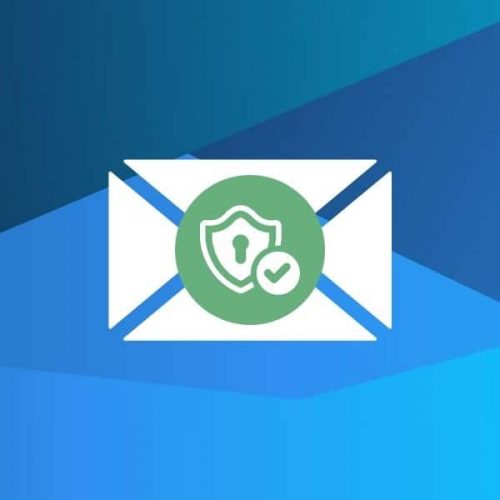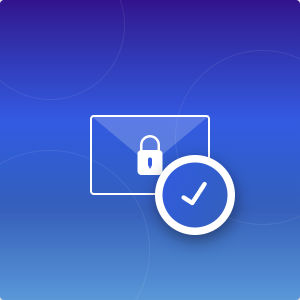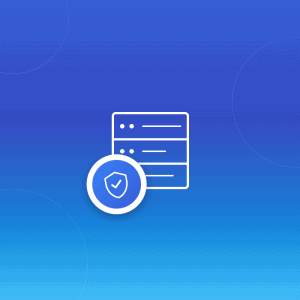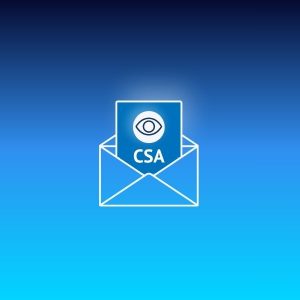Business email security isn’t optional—it’s urgent.
Cybercriminals use email as an easy way to infiltrate businesses. They don’t need sophisticated tools—just a well-crafted email. If an employee clicks the wrong link, opens a malicious attachment, or follows a fake request, your company could face serious consequences.
▶ In 2024, 68% of data breaches stemmed from human error, mainly from phishing scams (source). Waiting to act isn’t an option.
No one is off-limits! Hackers target finance teams processing payments, HR handling personal data, and customer service managing vendor interactions.
▶ Credential phishing surged by 703% in 2024, and employees face at least one advanced phishing attack per mailbox every week (source).
Every inbox is a potential entry point for attackers.
Social media adds another layer of risk. It accounts for 30.5% of all phishing attacks, with scammers using fake profiles and deceptive messages to steal credentials (source). Ignoring these threats is costly.
▶ The average data breach hit a record $4.88 million in 2024 (source).
Protect your business before it’s too late.
Business Email Security Best Practices
Follow these 10 email security best practices to safeguard sensitive information, stop phishing attacks, and keep hackers out of your inbox.
1. Train Employees on Cybersecurity Awareness
Hackers exploit human error to bypass security. Employees must learn to slow down, verify, and report suspicious emails before acting.
Cybersecurity training should focus on recognizing threats, questioning unusual requests, and building safe email habits.
✅ Teach Employees to Identify Phishing Emails
Phishing scams look convincing. Attackers disguise emails as messages from trusted contacts, using deception to steal passwords, financial data, or access credentials. Employees must know how to spot warning signs:
- Urgent requests demanding passwords or financial actions.
- Email addresses that closely mimic legitimate senders.
- Links that hide real destinations behind misleading text.
Use real phishing examples in training. Break down how attackers manipulate emotions and language to trick recipients. Give employees hands-on exercises to analyze emails and identify phishing tactics before they fall for them.
For instance, learn more about the differences between various phishing techniques by reading our detailed guide on distinguishing spear phishing from phishing.
✅ Simulate Phishing Attacks to Reinforce Learning
Test employees before attackers do. Send controlled phishing emails and monitor responses. If someone clicks, explain what they missed and why it was a phishing attempt. Immediate feedback builds awareness and prevents future mistakes.
- Make tests unpredictable—change attack styles, sender names, and email formats.
- Use real-world tactics, including fake invoices, security alerts, or executive requests.
- Reward employees who detect and report phishing attempts.
The goal isn’t to catch failures—it’s to build instincts that prevent real breaches.
✅ Teach Safe Email Habits
A strong security culture stops attacks before they succeed. Employees should:
✅ Verify sender identities before acting on email requests.
✅ Avoid downloading attachments from unknown sources.
✅ Hover over links to check real URLs before clicking.
✅ Confirm sensitive requests through a second channel, like a phone call or video chat.
Encourage employees to pause and question unexpected emails. A 10-second verification call can stop a scam before damage happens.
📢 Use Digital Signatures to Confirm Authenticity
Attackers forge emails that appear to come from colleagues, executives, or vendors. Digital signatures help employees verify legitimacy.
💡 Use Case: Mailfence provides digital signatures that confirm email authenticity. Employees should check for a valid signature before responding to high-risk messages. If a signature is missing, they should verify the sender’s identity before taking action.
For those interested in the technical aspects, our explanation of digital signatures breaks down how cryptographic techniques ensure email integrity.
2. Use Strong, Unique Passwords & Avoid Password Reuse
Weak passwords make cyberattacks easy. Hackers break into accounts using stolen or easily guessed credentials. Once inside, they move through systems, stealing data and causing damage.
Stop them by strengthening password security now – learn more about bad password habits to better protect your accounts.
✅ Create Long, Complex Passwords
Short passwords won’t protect your accounts. Use at least 16 characters, combining uppercase and lowercase letters, numbers, and symbols. Avoid predictable choices like “Password123” or personal details such as birthdays. The harder a password is to guess, the harder it is to crack.
✅ Never Reuse Passwords
Using the same password across multiple accounts is a security disaster waiting to happen. If hackers steal one password, they’ll try it on every site—email, banking, and work systems. Break the chain. Use a different password for every account.
✅ Store Passwords Securely
No one can memorize dozens of complex passwords, and writing them down creates risks. Use a password manager like Bitwarden or 1Password. These tools generate, store, and autofill strong passwords so you don’t have to.
📢 Add Two-Factor Authentication (2FA) for Extra Security
Even the strongest password won’t help if hackers steal it. Two-Factor Authentication (2FA) blocks unauthorized access.
💡 Use Case: Mailfence’s TOTP System
Mailfence offers Time-based One-Time Password (TOTP) authentication. Employees enter a temporary code from an authentication app when logging in, making stolen passwords useless to attackers. Set up TOTP for all employee accounts and require 2FA for email access.
3. Enable Multi-Factor Authentication (MFA)
Cybercriminals attack business emails every day. A weak password makes their job easy. Once inside, they steal confidential data, disrupt operations, and damage reputations. Stop them before they get in.
✅ Add a Second Layer of Protection
A stolen password shouldn’t be enough to access an account. Enable Multi-Factor Authentication (MFA) to block unauthorized logins. Require employees to verify access using:
✅ Biometrics (fingerprint or facial recognition)
✅ SMS codes (one-time passcodes sent to a mobile device)
✅ Authenticator apps (Google Authenticator, Authy, or similar tools)
Without this extra step, hackers can walk right into your systems.
✅ Make MFA a Company Policy—Not an Option
Security shouldn’t be left to personal preference. Require MFA for all employees. Enforce it across email accounts, cloud platforms, and internal systems. Don’t wait for a breach to take action.
📢 Use Case: Mailfence’s Built-in 2FA
Mailfence offers built-in Two-Factor Authentication (2FA) for stronger account protection. Activate it in settings and choose a preferred authentication method. Require all employees to use it.
✅ Prevent MFA Bypass Attempts
Hackers know that MFA blocks most attacks, so they try to trick employees into revealing codes. Train employees to spot phishing attempts that bypass 2FA. If an email or call asks for a verification code, assume it’s a scam.
✅ Prepare for Backup Access
MFA adds security, but losing access to authentication devices can create problems. Set up backup authentication options, such as recovery codes, to prevent lockouts.
4. Encrypt Emails & Secure Business Communication
Unencrypted emails put sensitive business data at risk. Attackers intercept messages, steal confidential information, and exploit weak security settings. Stop them by encrypting your emails.
✅ Use End-to-End Encryption (E2EE) to Protect Messages
Basic encryption only secures emails while they travel. Once a message reaches the server, it becomes vulnerable. End-to-End Encryption (E2EE) locks emails from the moment they are sent until the recipient decrypts them. No one else—email providers, hackers, or third parties—can read them.
✅ Encrypt Emails with Mailfence’s OpenPGP Security
📢 Use Case: Lock Down Confidential Emails
Mailfence offers OpenPGP encryption for businesses handling financial data, legal documents, or sensitive client communications. OpenPGP works with a public-private key system:
✅ The sender encrypts the message using the recipient’s public key.
✅ Only the recipient’s private key can decrypt and read it.
🔹 How to Secure Emails with Mailfence:
- Set up a Mailfence account and enable OpenPGP encryption.
- Generate public and private keys and store the private key securely.
- Share your public key with trusted contacts.
- Encrypt sensitive emails before sending. The recipient must use their private key to decrypt them.
✅ Strengthen Email Security Beyond Encryption
Encryption protects message content, but additional steps prevent breaches:
✅ Enable Multi-Factor Authentication (MFA): Add a second verification step, such as a phone code, to block unauthorized access.
✅ Train Employees on Secure Email Practices: Teach employees to identify phishing attempts and handle confidential emails securely.
✅ Audit Security Settings Regularly: Review encryption settings and check for outdated or misconfigured protocols that could expose emails.
5. Block Email Spoofing with SPF, DKIM, and DMARC
Cybercriminals forge email addresses to trick recipients into opening harmful messages. Without proper security protocols, attackers can impersonate your domain and send fraudulent emails that look real.
Stop them by setting up SPF, DKIM, and DMARC. These protocols verify sender identities, protect message integrity, and block phishing attempts.
✅ SPF: Verify Sending Mail Servers
SPF (Sender Policy Framework) tells email servers which mail sources are allowed to send messages on behalf of your domain. If an email comes from an unauthorized source, the receiving server flags or rejects it.
🔹 Set up SPF in three steps:
✅ Log into your domain’s DNS settings.
✅ Create an SPF TXT record listing your authorized mail servers.
✅ Publish the record and test it using an SPF checker.
A strict SPF policy prevents attackers from spoofing your domain. Keep your SPF record updated to avoid blocking legitimate senders.
✅ DKIM: Protect Email Integrity
DKIM (DomainKeys Identified Mail) adds a digital signature to emails, proving they haven’t been altered in transit. Without DKIM, attackers can modify messages and insert harmful links before they reach the recipient.
🔹 Enable DKIM for your domain:
✅ Generate a DKIM key pair (public and private).
✅ Add the public key as a TXT record in your domain’s DNS settings.
✅ Configure your email server to sign outgoing emails with the private key.
Emails without a valid DKIM signature may be flagged as spam or rejected. Always verify that DKIM signing works correctly.
✅ DMARC: Align SPF and DKIM for Stronger Protection
DMARC (Domain-based Message Authentication, Reporting, and Conformance) works with SPF and DKIM to block spoofed emails. It tells receiving servers how to handle messages that fail authentication and provides reports on unauthorized attempts.
🔹 Set your DMARC policy:
✅ p=none – Monitor email authentication failures without blocking messages.
✅ p=quarantine – Send suspicious emails to the spam folder.
✅ p=reject – Block fraudulent emails from reaching inboxes.
Start with “none” to collect data, then switch to “quarantine” or “reject” once SPF and DKIM are properly configured.
✅ Mailfence Integration: Strengthen Email Security
📢 Use Case: Block Unauthorized Emails
Mailfence automatically validates SPF, DKIM, and DMARC for incoming emails. It flags, quarantines, or rejects messages that fail authentication, preventing phishing emails from reaching employees. Businesses can customize validation settings to enforce stricter security policies.
💡 Take Action Now
🔹 Set up SPF, DKIM, and DMARC for your domain.
🔹 Monitor authentication reports and adjust policies for stronger protection.
🔹 Use Mailfence or a similar service to enforce email validation.
🔹 Train employees to recognize and report phishing emails.
Don’t let attackers use your domain to spread scams. Lock down your email security today.
6. Deploy an Email Security Solution
Hackers rely on email to spread malware, steal credentials, and launch phishing attacks. Without protection, your business stays exposed to threats that can shut down operations or leak sensitive data.
You need an enterprise-grade email security solution that blocks these attacks before they reach your inbox.
✅ Block Phishing, Spam, and Email Fraud
Spam filters alone aren’t enough. Attackers use advanced techniques to bypass traditional defenses. Deploy an enterprise-grade email security solution that stops threats in real time.
✅ Use tools like Mimecast and Proofpoint to analyze email patterns, detect suspicious links, and quarantine high-risk messages.
✅ Set up real-time threat detection to identify phishing attempts before they reach employees.
✅ Train employees to report suspicious emails instead of engaging with them.
✅ Encrypt Emails to Stop Unauthorized Access
Hackers intercept unprotected emails to steal sensitive data. Encrypt all business emails to block unauthorized access.
📢 Use Case: Mailfence’s TLS Encryption
Mailfence secures emails with Transport Layer Security (TLS), preventing outsiders from reading messages. Businesses handling financial data, legal documents, or customer information should switch to Mailfence’s encrypted email infrastructure.
✅ Secure Your Inbox with a Secure Email Gateway (SEG)
A Secure Email Gateway (SEG) filters threats before they enter your network. Set up an SEG to:
✔ Stop phishing and malware attacks before they reach employees.
✔ Prevent Business Email Compromise (BEC) scams.
✔ Enforce compliance with encryption and Data Loss Prevention (DLP) tools.
7. Prevent Unauthorized Access & Secure Business Emails
Cybercriminals look for weak spots in business email security. Don’t give them an opening. Lock down email access, track login attempts, and enforce encryption to block unauthorized entry.
✅ Restrict Email Access to Approved Devices
Block unauthorized logins by limiting email access to company-approved devices.
✅ Set up device whitelisting to allow only registered devices to connect.
✅ Automatically block unrecognized devices unless approved by an administrator.
✅ If employees need access on personal devices, require admin approval first.
✅ Monitor Logins & Enforce Auto-Logout
Track login activity in real time and set up alerts for login attempts from unknown locations.
✅ Shut down suspicious logins immediately.
✅ Enforce auto-logout after 10–15 minutes of inactivity to prevent abandoned sessions from becoming security risks.
📢 Use Case: Mailfence’s SSL/TLS Encryption
Mailfence forces all connections—IMAP, SMTP, and POP—through SSL/TLS encryption, blocking hackers from intercepting login credentials. Businesses should activate SSL/TLS across all devices for stronger protection.
8. Improve Endpoint & Email Security Hygiene
Cybercriminals target outdated software, unprotected endpoints, and weak email security. Stop giving them an entry point. Strengthen your defenses with these steps.
✅ Keep Software and Antivirus Updated
Hackers exploit outdated systems. Patch vulnerabilities before they do.
✅ Set all software, operating systems, and antivirus programs to update automatically.
✅ Use a centralized patch management system to push updates across all devices.
✅ Review security logs regularly to detect threats before they escalate.
✅ Use Email Scanning Tools to Block Malicious Attachments
Attackers embed malware in email attachments. Scan files before they reach inboxes.
✅ Deploy an email security gateway to filter attachments.
✅ Block executable files and suspicious formats automatically.
✅ Use sandboxing technology to test unknown files before allowing downloads.
📢 Use Case: Mailfence’s Perfect Forward Secrecy (PFS)
PFS encrypts each email session separately, making stolen keys useless to attackers. Businesses using Mailfence prevent hackers from accessing past conversations.
9. Avoid Public Wi-Fi for Email Communication
Public Wi-Fi puts business emails at risk. Hackers can intercept your login credentials, read your messages, and steal sensitive data.
Airports, coffee shops, and hotels offer free internet, but that convenience comes at a cost—exposed information. Never assume a public network is safe, even if it requires a password.
✅ Use a VPN to Protect Your Connection
✅ Never access work emails on public Wi-Fi without a VPN.
✅ Choose a trusted VPN provider, activate it before connecting, and keep it running while using email.
✅ Rely on Secure Email Services
✅ Use encrypted email platforms like Mailfence that enforce HTTPS connections.
✅ Avoid unsecured webmail services when working remotely.
📢 Use Case: Mailfence’s HSTS Protection
Mailfence enforces HTTP Strict Transport Security (HSTS) to prevent connections to unsecured versions of its site. Employees should always log in through HTTPS to block unauthorized access.
✅ Turn Off Automatic Wi-Fi Connections
✅ Disable automatic Wi-Fi connections on laptops and smartphones.
✅ Manually verify network names before joining to avoid fake hotspots.
✅ Use Mobile Data When Possible
✅ Use cellular data instead of public Wi-Fi when handling sensitive emails.
✅ For extended work sessions, set up a personal hotspot with a strong password.
✅ Enable Two-Factor Authentication (2FA)
Even if hackers steal passwords, 2FA prevents unauthorized access.
✅ Turn on 2FA for all email accounts.
✅ Use an authentication app instead of SMS for stronger security.
10. Regularly Backup Email Data
Losing emails disrupts communication, exposes data, and causes major business setbacks. Automate backups to prevent email loss.
✅ Automate Backups to Prevent Data Loss
✅ Schedule automatic email backups instead of relying on manual exports.
✅ Store backups in multiple locations (local drives and encrypted cloud storage).
📢 Use Case: Mailfence’s Secure Email Backup System
Mailfence allows businesses to export and securely store emails on external encrypted storage devices. Automate email backups to keep important messages safe.
✅ Recover Emails Without Stress
✅ Test backups regularly to ensure quick recovery when needed.
✅ Set up encrypted storage solutions for added protection.
Email Security Best Practices FAQs
1. Enable Multi-Factor Authentication (MFA): Add an extra security layer with an authenticator
app or hardware key. Avoid SMS-based MFA.
2. Encrypt Emails & Attachments: Use end-to-end encryption like PGP or S/MIME. Never send
sensitive data unprotected.
3. Train Employees on Phishing: Run phishing simulations. Teach employees to verify senders and report suspicious emails.
MFA blocks hackers even if they steal a password. It requires a second authentication step, like an app-generated code or hardware key. Set up MFA on all business emails and make it mandatory. Avoid SMS-based codes—they’re vulnerable to SIM-swapping attacks.
Built-in email security catches basic threats but fails against sophisticated attacks. Default settings lack strong encryption, advanced phishing detection, and strict access controls. Use third-party solutions for better protection.
Stronger security requires better tools. Third-party solutions provide:
– Better Encryption: End-to-end protection prevents unauthorized access.
– Stronger Phishing Protection: Blocks spoofed emails and malicious links.
– Advanced Access Controls: Restricts logins by location, device, or time.
Relying on built-in security leaves gaps. Upgrade to a secure email solution for stronger protection.
BEC scams trick employees into sending money or sharing sensitive data. Attackers impersonate executives, vendors, or partners to create urgency and bypass verification.
Hackers mimic email conversations, copy writing styles, and use fake domains that closely resemble real ones. Employees follow fake requests, unknowingly sending money or data to criminals.
Use SPF, DKIM, and DMARC to verify emails. Require phone or video verification for financial requests. Enforce dual approval for large transactions to prevent fraud.
Phishing emails look real but steal credentials or install malware. They often appear as password resets, invoices, or urgent executive messages.
Hackers manipulate emotions to create fake emergencies. Employees act quickly without verifying, increasing the risk of stolen credentials and system breaches.
Run security training and phishing simulations. Use AI-powered email filtering to block threats. Enforce MFA to stop hackers from misusing stolen credentials.
No, but businesses can reduce risks with ongoing training, strict authentication, and advanced security tools. Prevention is key.
Conclusion
Cybercriminals never stop looking for weak spots. Don’t give them an easy target. Review your email security today. Strengthen your defenses by using multi-factor authentication, encrypted email services, and phishing detection tools.
▶ Mailfence offers built-in encryption, digital signatures, and advanced security settings to keep your emails private. Switch to a secure provider and reduce your risk of breaches, data leaks, and cyberattacks.
💡 Take action now! Audit your current security policies, train your team to recognize threats, and implement stronger protection.
The longer you wait, the more exposed your business becomes. 🔏 Lock down your inbox before attackers find their way in.



